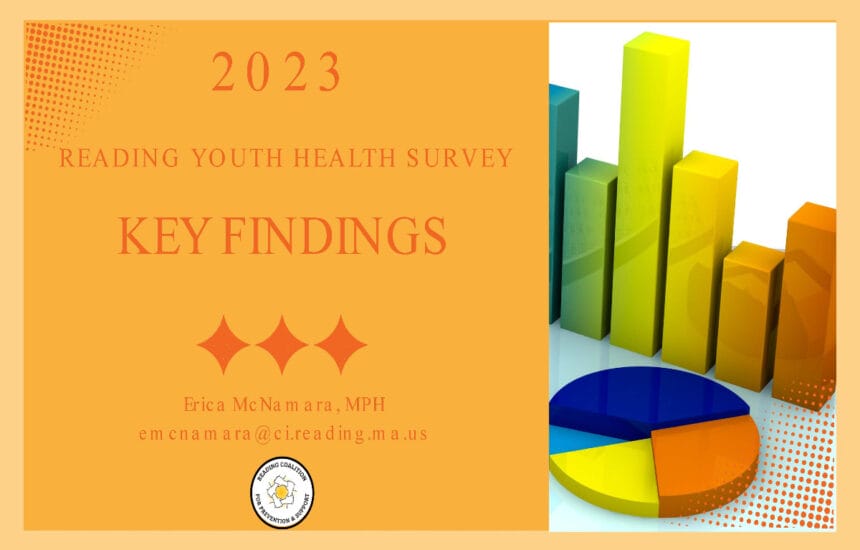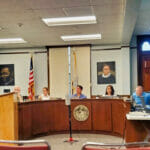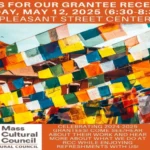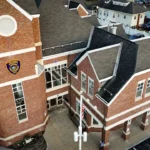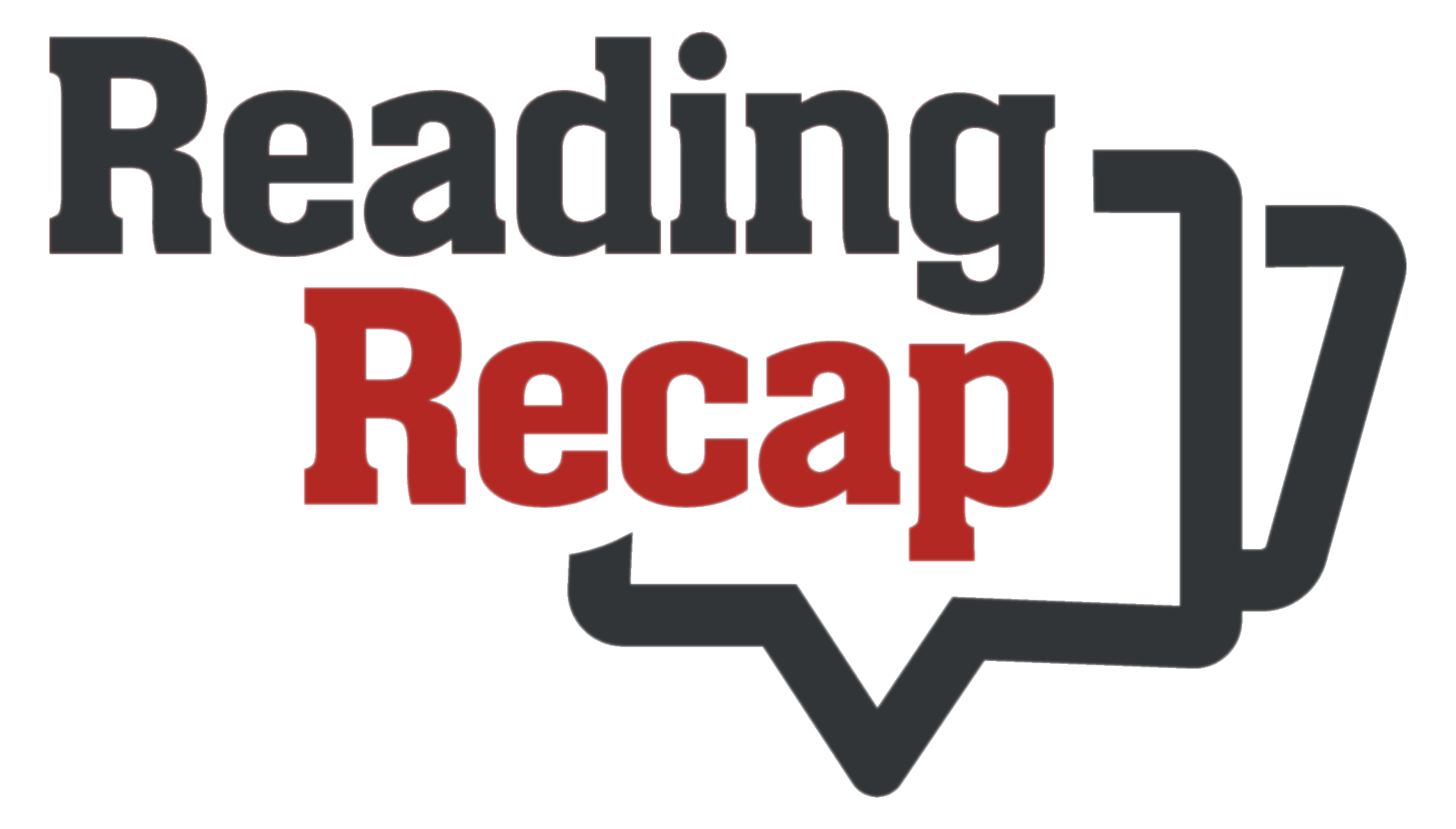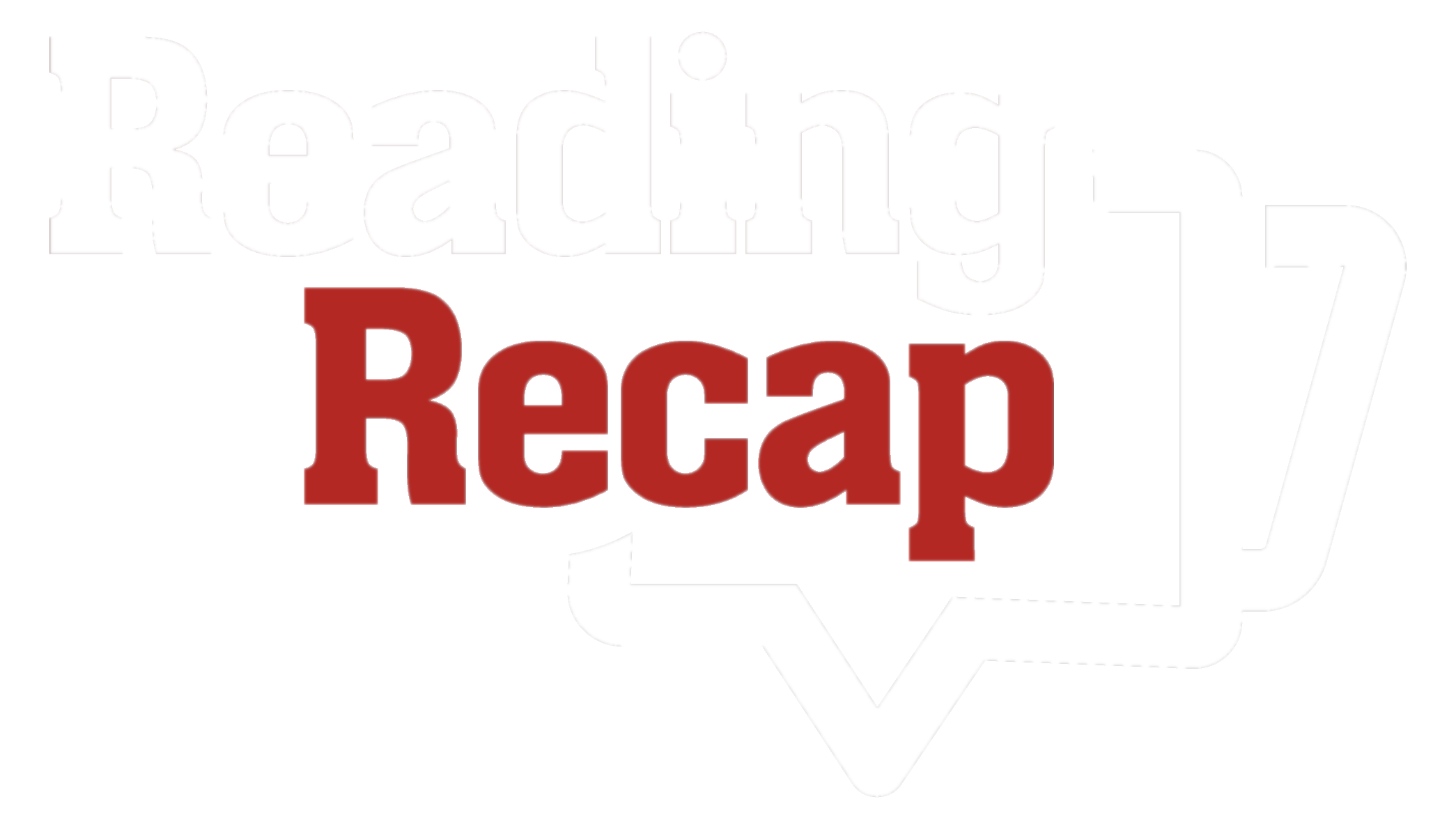The Reading School Committee (SC) of Reading Public Schools (RPS) is meeting on Thursday November 2, 2023. The meeting is being held at 7pm at the Reading Memorial High School (RMHS) library and will be broadcast by RCTV and will be accessible via zoom.
Links to the wath the meeting, agenda and packet are posted below. The packet is 110 pages long with the bulk being the presentation on the Youth Risk Behavior Study (about p. 23-53) and the school improvement plans (p. 55-110).
The agenda also includes the “focus on excellence,” which this week honors RMHS students who have reached academic excellence in biliteracy.
Focus on Excellence
(p. 4-9 of packet):
At the start of the SC meeting, students in grades 8, 9 and 11/12 who have taken Language Opportunity Coalition (LOC) assessments and reached certain levels on the assessments, will receive certain biliteracy awards.
The 2023-2024 RMHS LOC Achievement Award winners include the students listed below:
The 2023-2024 RMHS LOC Achievement Award winners include the students listed here:
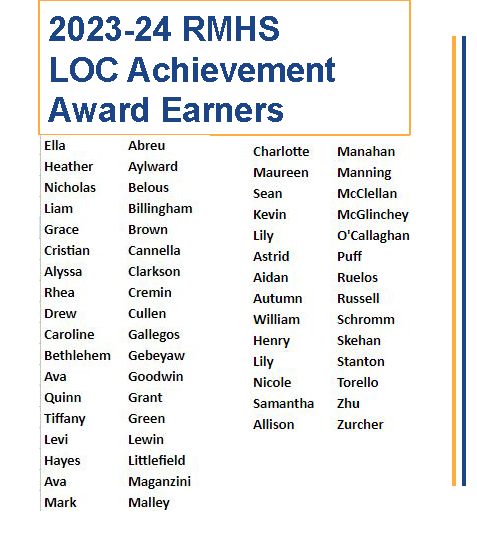
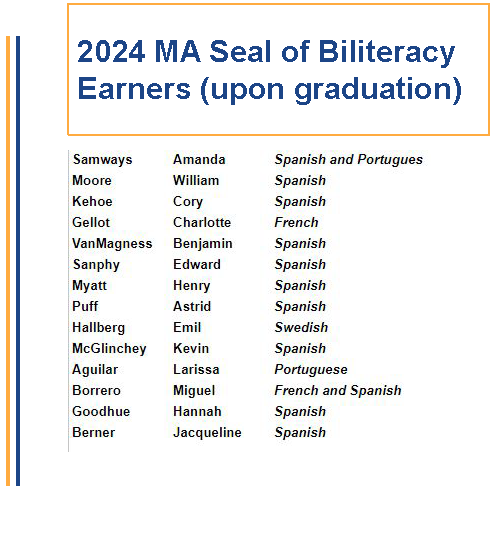
In addition, there is a list of 2024 Massachusetts seal of biliteracy earners who will receive an award option graduation. The students are listed along with their languages.
The listed packet pages include more about each award.
2023 Youth Risk Behavior Survey
Presentation (p. 23-53 of packet)
Every two years, Massachusetts requires schools to give the Youth Risk Behavior Survey (YRBS) to middle school and high school students. This survey measures a huge range of behavior topics: mental health, bullying, substance abuse, sexuality, etc. Prior to 2021, Erica McNamara of the Reading Coalition went over this data in detail and does analysis, but it appears this year, as in 2021, a consultant was hired (JSI) to analyze and create a presentation on the search results. However, the presentation for this year is extremely difficult to read on many pages, as compared to the 2021 presentation (which can be found here (see https://www.reading.k12.ma.us/en-US/our-school-committee-65707192/meeting-agendas-e1f83068 ).
This year there were 1520 students participating, 782 in the high school and 740 in the middle school, but the high school data was very skewed in that it did not include a full cohort of seniors, because many seniors were on internships at the time of the survey. Indeed, the presentation does acknowledge this at page 33 when it notes that “due to the internship program occurring during the survey sample window, the sample of high school seniors is smaller than typical..seniors typically display the most risk behaviors so any combined results that demonstrate decline from 2021 may be impacted by the smaller sample of 12th graders.” This might explain why there are few comparisons to 2021 data for high schoolers, but it does not explain the lack of comparisons for middle schoolers.
I had quite a bit of difficulty figuring out what a lot of this presentation is trying to convey, and even difficulty in reading the text, because of the non-user-friendly formatting and very awkward grammar used in many places. I hope the presenters can compensate for this during the meeting. This is easily one of the poorest quality and most difficult to read presentations I have ever seen in an RPS packet. The difficulty in particular comes not only from some very odd formatting issues (where letters from words may be spread out over a line and joined to adjacent words), but also things like:
– varying fonts, including in size, capitalization, color, and highlighting, all over a page for no apparent reason
– choosing difficult to read font-background pairings, e.g., thin white font on orange or red background
– superimposing fonts on top of graphic images where the font does not have enough contrast with the image, such that the text cannot be read, e.g., thin purple font over a full color image with a lot of gray on it, as shown on p. 46-47 – and these are important caveats that appear to narrow the data shown on the page, but they are nearly impossible to read.
As best as I could follow this presentation, even with the unfriendly formatting, the biggest messages seem to be relating to issues of mental health and bullying, where, per slide 43, it appears that RPS students report a rate of bullying at a rate of 15%-16% which is double the rate reported in 2021 and higher than the Middlesex League (comparable schools) rate of 9%. However, the poor presentation quality makes it difficult to be sure what data one is looking at. For example, the mental health data on p. 46-47 is confusing because the tiny header on p. 46 says it is for HS (high school), and indicates that 51% of HS students said their mental health was not good sometimes, most of the time, or always……but then the tiny header on p. 47 says it is for MS (middle school), but the text on the slide states “36% of local Hs students said their mental health was not good sometimes, most of the time, or always….”. So, it is not clear whether the slide 47 is for middle school or high school. The data on both slides is further broken down for some subgroups but not all, e.g., for :“F” which appears to be female, “TGD” (transgender and gender diverse – I am guessing) and “LGBQ+” (self-explanatory), but does not include data for “M” male, which seems odd.
The presentation for this year also, IMHO, lacks a lot of the data that the 2021 presentation had, such as data on tobacco use, alcohol use, drug use, sexual activity, biggest stressors for students, etc. These topics are not even mentioned.
The presentation also includes, here and there, a few random “student feedback” open response quotes, but there is not much context given – no information regarding whether this is a one-off quote from one of the 1500+ kids who took the survey or whether this quote represented something multiple students were saying. For most of the quotes, it is not even clear if the quote came from a high school or middle school student.
Some of the data in the slides definitely requires more context from the presenters. For example, I am not clear exactly how many high school students took this survey:
– slide 28 says 782 students
– slide 32, if you add the numbers, lists a total of 780 HS students
– slide 34: “sexual preference” section has sample size of 779 students, the gender identity sample size lists 782 students, and the race sample size was 778 students.
The middle school data similarly lacks consistency. Slide 35 shows a total of 738 students, but then on slide 36 this does not match the breakdowns under race (730 students), gender identity (740 students), ethnicity (718 students), and Sexual orientation (735 students).
I realize the presentation is a highlight of data and not all data, but it appears that there is a lot of important data that we have seen in past YRBS presentations, which is not at all part of this presentation, even though it was part of the youth risk behavior survey. I hope to hear more about this during the SC meeting.
School Improvement Plans
Elementary and Secondary School (P. 54-110 OF PACKET)
These school improvement plans (SIPs) are presented every year and highlight how each school will address its own unique goals as well as how it will meet district goals. There is way too much detail for an article to list here, and many of the high-level details are in the overview presentation on slides 55-66. These slides show commonalities between schools and specific highlights for each school. In addition, even at the SC meeting, due to time limitations, the presentations will only be provided as an overview of the content in each SIP, because each principal will present their SIP at an upcoming PTO meeting.
Some selected local school highlights in their SIPS (from the presentation) – one thing I note for several elementary schools is the creation of different types of cross-classroom groupings (see, e.g., Barrows, Wood End) for targeted instruction. This is something I saw personally at times years ago at Joshua Eaton, but only with certain teachers in certain grades. The cross class groupings back then appeared to be effective in being able to tailor instruction based on student ability.
The bullets below are just highlights – both the presentation and the SIPs have many more actions:
Barrows:
- Our school community will participate in piloting the Second Step® program through weekly classroom meetings developing common language throughout the building to help students develop better communication, coping skills and learning strategies.
- Teachers of grades 3-5 will maximize student engagement and targeted instruction by creating flexible and fluid groupings across classrooms for strategic instruction with close progress monitoring.
Birch Meadow:
- School wide professional learning plan to support staff learning, focusing on equipping teachers with Tier 1 and Tier 2 strategies to increase student achievement and engagement and teachers will participate in walk-throughs of math and literacy lessons, as well as conduct collaborative literacy level checks with administrators
- The Birch Meadow Composting Pilot will transition to a school-wide implementation phase at all three lunches and increase student leadership opportunities in the building through the “Composting Ambassador Program.”
- The PTO, School Council, and Instructional Leadership Team will work collaboratively to identify ways to increase access to school events for all students. This includes funding transportation for all students, adjusting timing of events to make them accessible to all students, and working with food services to ensure the allergy needs of all students are considered
Joshua Eaton:
- Leverage math professional development to define and refine our approach to supporting all students within the math core instructional block
- Refine PBIS (PAWS) School Store by gathering student voice on items sold, redefining what it means to receive a “spot” for positive recognition in grades 3-5.
- Refine Student Led Groups in order to open participation for more students using a 6-week cycle and expand offerings.
Killam:
- Increase systems for two-way communication in home languages
- Increase the amount of time students are provided direct intervention and instruction
- Enhance our tutor and paraeducator schedules
Wood End:
- Provide professional development and workshop opportunities for all staff to support inclusive practices and ensure all students get what they need.
- In collaboration with the Instructional Leadership Team, create a bank of resources for classroom use that bring awareness to different cultures, ethnicities, and backgrounds
- Implementation of cross-classroom conferencing/small group instruction to maximize student engagement and efficiently provide targeted instruction
Coolidge:
- Teachers and teams will maintain strong lines of communication with parents, including their “At a Glance” pages, team emails, positive personal emails, phone calls, and parent meetings.
- Teams, administrators, and the Middle School METCO Coordinator will purposefully increase outreach and connection with Boston resident parents/ caregivers.
Parker:
- Consistent Team Time practices focusing on intervention and enrichment/extension
- Strategically schedule reading and math interventionists to provide push-in support
- Provide an extra math intervention period for grade 8 students
- Leverage math coaches to provide job embedded instructional support for math teaching staff
- Partnering with Mathnasium to provide math tutoring at Parker Middle School.
RMHS:
- RMHS staff in World Language and Science Departments will engage in an articulated curriculum review process used to review instructional materials, practices and assessments in identified content areas in the 2023-24 school year
- Select RMHS staff will participate in a stakeholder/community collaborative group to identify, examine, and make recommendations for Secondary Math Pathways (SY23-24).
- RMHS will implement year 1 of Innovation Career Pathways courses in Advanced Manufacturing (Engineering) and
- Information (Computer Science and Digital Media), and seek to expand ICP by applying through DESE to add both a Clean Energy and Healthcare and Social Assistance Pathways in the 2024-25 academic year
- RMHS is partnering with both Middlesex Community College and UML to bring additional Dual Enrollment courses to students in the 2024-25 academic year.
- RMHS will commit to adopting a new internal schedule for the 2024-25 school year if it is determined that the change to the internal schedule will yield more equity across subject areas and bring about a wider swath of course options for students.
For reference each schools SIP is found at these respective packet pages and I include below as well the dates and zoom link to the respective PTO meeting :
These school-based meetings will be offered through a hybrid format and the dates, times, and Zoom links are included below.
Barrows (packet p. 67-71) PTO meeting on November 15th, 7pm; https://readingpsma.zoom.us/j/88139870550
Birch Meadow (packet p. 72-75) PTO meeting on November 15th, 7:30pm; https://readingpsma.zoom.us/j/86129108455
Coolidge (packet p. 86-91) PTO meeting on November 6th, 3:30pm; https://readingpsma.zoom.us/j/89089378809
Joshua Eaton(packet p. 76-78) PTO meeting on – November 6th, 7pm; https://readingpsma.zoom.us/j/5912706213
Killam(packet p. 79-81) PTO meeting on November 14th, 7pm; https://readingpsma.zoom.us/j/87873820056
Parker(packet p. 92-99) PTO meeting on November 13th, 7pm; https://readingpsma.zoom.us/j/85845982809
Reading Memorial High School(packet p. 100-110) PTO meeting on January 17th, 7pm; https://readingpsma.zoom.us/j/87020373416
Wood End(packet p. 82-85) PTO meeting on November 15th, 8:15am; https://readingpsma.zoom.us/j/82258187799
The SC meeting will end with an executive session relating to collective bargaining.
How to Watch this Meeting
The RCTV YouTube live stream link is here: https://www.youtube.com/watch?v=QMRgwaSLUTQ
You can also watch via Xfinity channel 6 (“local 3”) or Verizon channel 32.
In addition, you can join the meeting (or watch) via the Zoom link here:
Join Zoom Meeting https://readingpsma.zoom.us/j/85410564289
Meeting ID: 854 1056 4289
One tap mobile +16469313860


